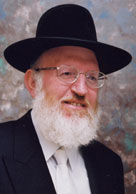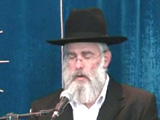Beit Midrash
- Torah Portion and Tanach
- Bereshit
- Bereshit
In the description of the creation of the first woman (ibid. 21-23), a prominently repeated word is tzela. This word shares the first two Hebrew letters with tzelem, and in both cases, the connection between man and woman is in the forefront. Let us try to understand the significance of the tzela to this element of creation. According to the standard opinion in Chazal (Bereishit Rabba 80) and among commentaries such as the Ramban, the tzela is the bone (rib) from Adam’s body from which she was created. Another opinion connects the word to the one for the "side wall" of the Mishkan. Accordingly, Adam and Eve were created back-to-back as full forms, who were separated from each other’s side. The varied opinions can be said to symbolize different outlooks as to the relative prominence of man and woman.
Let us now connect tzela to a third and related concept – a physical phenomenon with great spiritual implications – tzel (a shadow). The Rama (Orach Chayim 664:1) cites the belief that there is a hint in the shadow of the moon on Hoshana Rabba as to what will happen to a person and his relatives during the course of the year. The Rama, though, prefers the opinion that one should not seek to see that hint: because it can be a bad omen, because few people can decipher it, and because it is better to be tamim (unquestioning) rather than try to predict the future.
We can suggest, then, that tzel represents the connection with Hashem. This certainly finds expression with the aforementioned tzelem. It continues with the life-giving force that accompanied the taking of the tzela from Adam. The removal of one’s tzel is a sign of their disconnection from its life source (see Bamidbar 14:9). We can now more greatly appreciate the statement of Chazal that when husband and wife are interacting properly, the Divine Presence is among them (Sota 17a). The tzela represents a person’s ability to strive for spiritual greatness and cling to the Divine Presence despite his having come from earth. His connection to his/her spouse is a secret recipe for success.
Returning to the sukka, its shade also represents the closeness to Hashem, and a sukka must have mainly shade to be kosher. The word hatzala (salvation) is also related. We receive salvation when Hashem protects us.
May we merit having personal and national connection to Hashem, and, in the merit of the tzela, may we maximize the tzelem and have hatzala.

"The End Is Rooted in Its Beginning"
Rabbi David Dov Levanon | Tishrei 26 5783
Bereshith
Rabbi Berel Wein zt"l | Tishrei 5768

The Genesis of Love
Rabbi Jonathan Sacks | Tishrei 23 5780

Parashat Hashavua: Why Specifically in Eretz Yisrael?
Rabbi Yossef Carmel | Tishrei 29 5783

Rabbi Yossef Carmel
Head of "Eretz Hemda" Dayanut Kollel

Did Paroh and the Egyptians Do Teshuva?
Shvat 1 5782

Parashat Hashavua: A Torah of Life – part V – More on Yehoshua
Tammuz 5785

Waiting For What is Half Yours
Parashat Devarim
8 Av 5765





















